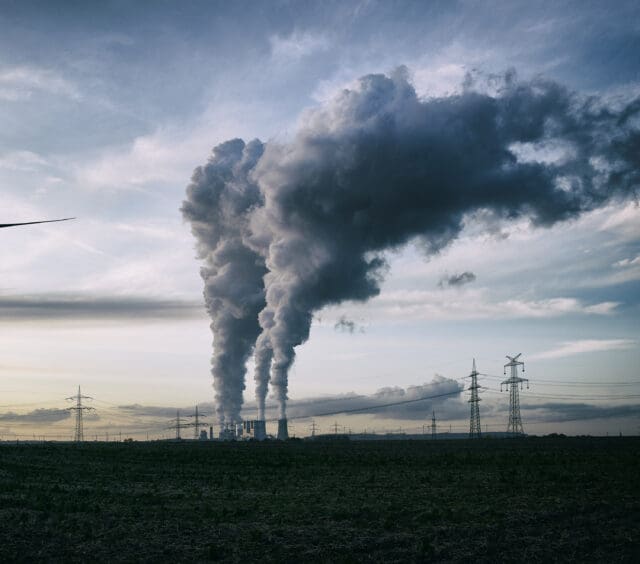Bill Awaiting Governor’s Signature Would Add Significant Time and Scrutiny to Facility Air Permitting in Effort to Protect Disadvantaged Communities

On Earth Day in April of this year, the New York legislature passed Senate Bill S8830 and it is now awaiting signature by Governor Hochul.
Senate Bill S8830 requires state agencies to prepare an Environmental Impact Statement (EIS) for new facilities that “may have a significant effect on the environment,” and the state must consider whether the proposed action may “reasonably be expected to cause or increase a disproportionate or inequitable … burden on a disadvantaged community.”
The proposed statute defines “disadvantaged communities” as “communities that bear burdens of negative public health effects, environmental pollution, impacts of climate change, and possess certain socioeconomic criteria, or comprise high-concentrations of low- and moderate- income households… .” Senate Bill S8830 also requires that adopted regulations include, at a minimum, public participation and public hearings. New Jersey and Maryland have already signed a similar bill into law.
The bill, if adopted, would add another layer of scrutiny on new projects seeking approval and facilities requiring air permit renewal. This would apply primarily to “major” facilities holding a Title V permit (i.e., major sources of regulated and non-regulated air pollutants, including air toxics or HAPs, as defined in New York State Department of Environmental Conservation (NYSDEC) Subpart 201-2.1(b)(21), and those applying for major modifications). Given the intent of the bill, this layer of additional environmental scrutiny would be much higher on facilities operating in communities deemed disadvantaged.
The main driver for this was perhaps the United State Environmental Protection Agency’s (EPA) 2021 air toxics study report (additional information here and here), which found that disadvantaged communities are disproportionately impacted and people living in such communities are experiencing higher than normal rates of regulated and toxic air pollution.
The bill, when signed, would also affect sources with State Facility permits – especially those that have opted for federally enforceable emission caps (NYSDEC 201-7.1) to avoid Title V, and those considered “synthetically minor” by opting for “emission capping by rule.” (NYSDEC Subpart 201-4.5).
Major facilities, as defined in NYSDEC Subpart 201-2.1(b)(21), holding Title V facility permits and State Facility permitted sources and the ones considered “synthetically minor” would most likely be affected. All facilities with existing air permits when required to renew (Title V, after five years; State Facility and minor registration sources, after ten years), and any new projects deemed not minor will have to undergo this review process for approval.
The bill will take effect 180 days after the date of signing. It will require NYSDEC to evaluate an EIS in its review process for approval or renewal. The EIS will include a variety of requirements such as air, water, noise, and traffic. This is to ascertain that approval of new projects and reissuing of existing permits would not increase disproportionate and/or inequitable pollution burdens on disadvantaged communities. In its review process, NYSDEC will be required to consider the cumulative effects of all sources, including human health effects (not just the “project”), when rendering its decision for approval or rejection of a project.
In its deliberate review and approval process, NYSDEC – at a minimum – would be required to consider the following:
- Baseline air monitoring data collected in the affected disadvantaged community within two years of an application for a permit or approval
- Ambient concentration of regulated and non-regulated air toxics – this is done via air quality modeling using guidelines in NYSDEC’s DAR-1 document and the EPA’s AERMOD
- Traffic volume
- Noise and odor levels
- Lead paint exposure and a host of other requirements as outlined in the bill, with the most significant hurdle to projects seeking approval or permit renewal being the cumulative impact of pollution sources, including an “existing burden report,” on disadvantaged communities.
The major facilities/projects potentially affected include:
- Title V Facilities – initial permitting, renewals, and significant modifications
- State Facility permit – new emission sources of regulated/non-regulated air toxics with federally enforceable emission caps, taking into account the cumulative impact, and those requiring permit renewal
- Synthetic minor sources per NYSDEC Subpart 201-4.5 (minor sources opted for emission capping by rule)
- Projects subject to New Source Review (NSR – NYSDEC Part 231) – applies to new sources/major facilities and modifications, as outlined in NYSDEC Part 231
- Projects requiring the use of a federally enforceable emission cap (State Facility permit holders)
- Projects subject to NESHAPs and NSPS (40 CFR 61 and 40 CFR 60)
- Projects subject to federal Clean Air Act Title IV – acid rain sources
In short, when approving or renewing permits, NYSDEC has the burden of demonstrating – via extensive review of air data and other environmental factors – that the cumulative effects of pollutants on disadvantaged communities are not disproportionately higher than normal in burdening such communities.

About the Author
Mehdi Rahimi, PESenior Environmental Scientist
Mehdi is a an environmental consultant with over 30 years of experience managing and implementing multimedia environmental projects with an emphasis on air program management, compliance, facility-wide emission inventory, and permitting under Title V. His expertise also includes NSPS regulatory analysis and compliance program design, source testing and air/water emissions characterization studies, air quality dispersion modeling and impact analysis studies using USEPA AERMOD, and pollution control systems evaluation and abatement strategies for diesel-fired generators per Subpart ZZZZ. Additionally, Mehdi is skilled at site assessment surveys and compliance audits for air and SPCC report preparations, as well as annual TRI, hazardous waste, and Tier 2 chemical inventory preparations and reporting.